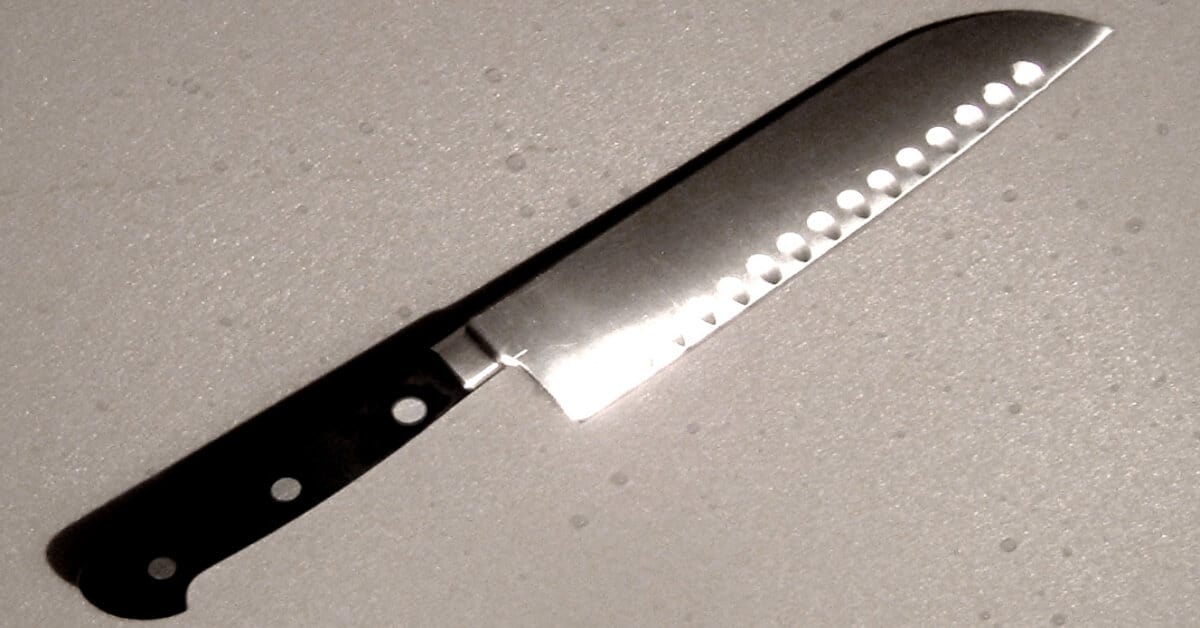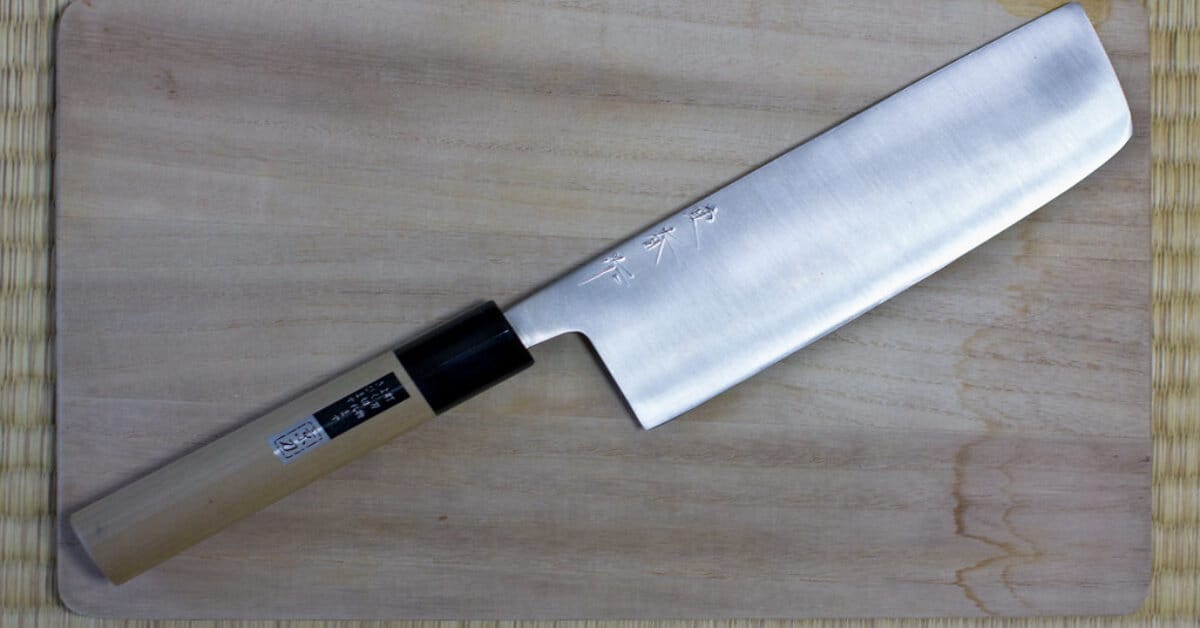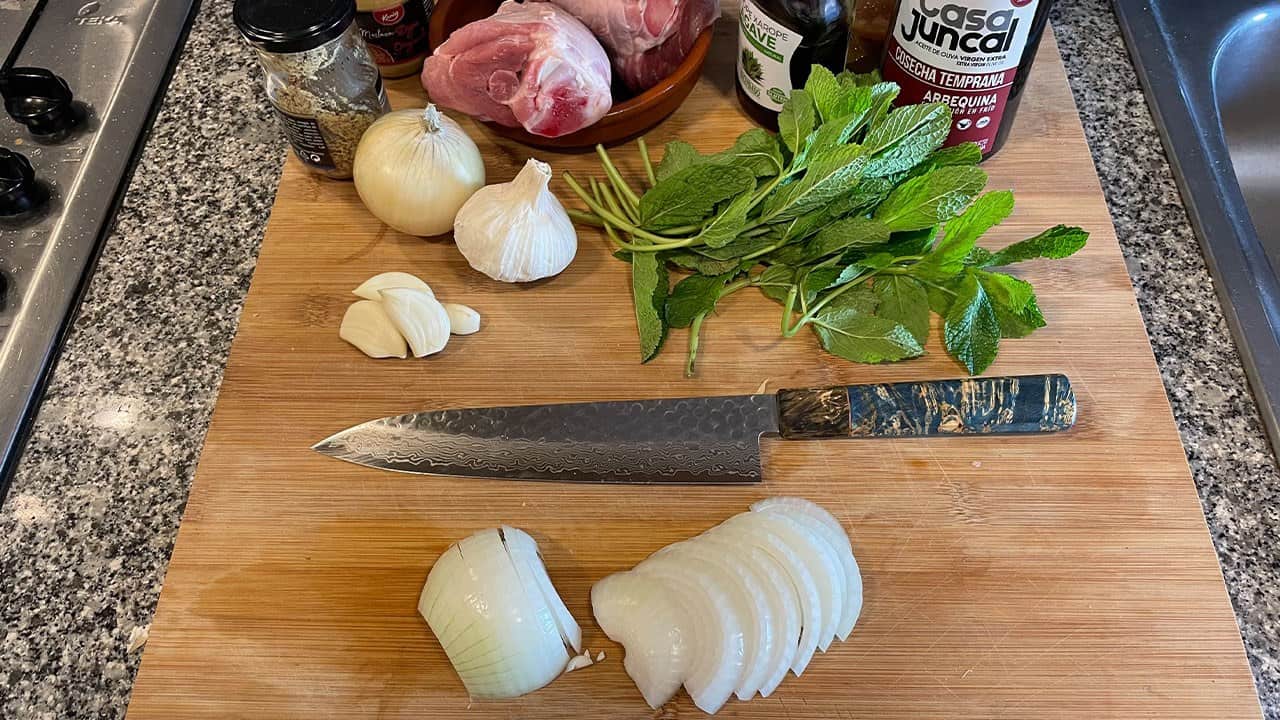There are many different types of kitchen knives on the market, but when it comes to German knives versus Japanese knives, there are some key differences that you should be aware of. German knives are typically heavier and more durable, while Japanese knives are lighter and can be sharper. So which one is right for you? It really depends on your personal preferences and what you’ll be using the knife for. Are you a chef who wants weight and strength or the ability to cut and slice with a more delicate touch? Let’s read on to find out how the type of chef you are will influence which style of knife you should buy.
Why German or Japanese knives?
There are a few reasons why you might want to consider German or Japanese knives for your kitchen. Both represent the pinnacle of world cutlery but in their own field. German knives, often hailing from Solingen, which is often called the city of knives, are seen as the best knives in all the West. If you’re cooking anything that could be described as Western cooking, then German knives have evolved over centuries cooking that style of food. They’re known for their high-quality materials and construction, which makes them incredibly durable. In addition, they’re also quite heavy, which gives them a lot of power when cutting.
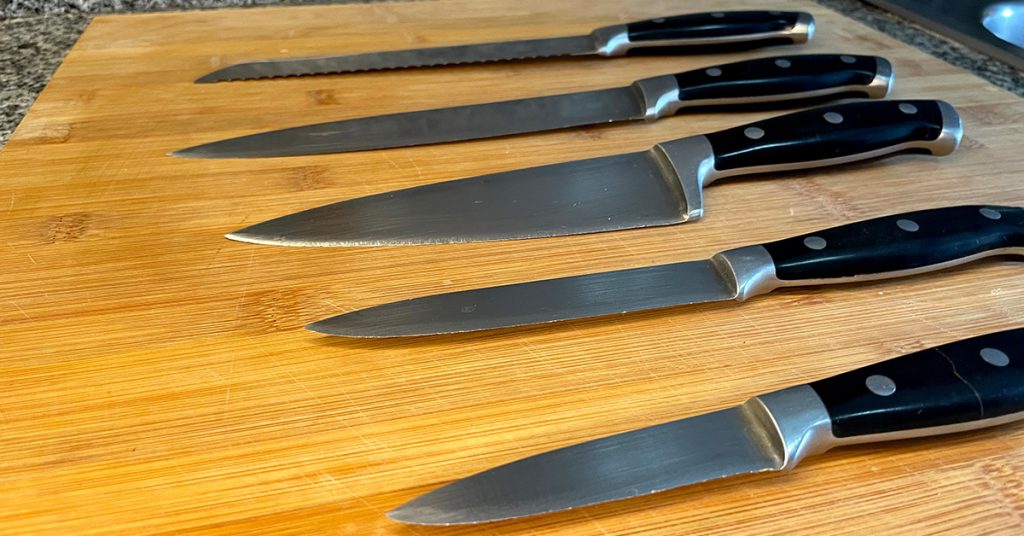
Japanese knives, on the other hand, are known for their sharpness and precision. They’re also lightweight, making them easy to use for extended periods of time. However, they can be more prone to damage than German knives. Japan has its own unique culture and culinary traditions, which means Japanese knives have evolved completely differently to German knives. These traditions are by no means inferior to Western traditions either, which means both German and Japanese knives offer exceptional quality in their own unique ways.
The key differences between German knives and Japanese knives
When it comes to German knives and Japanese knives, there are a few key differences that you should be aware of.
The first difference is weight. German knives are often heavier than Japanese knives. The second difference is hardness. Japanese knives are usually harder than German knives, which offers various benefits and disadvantages. The third difference is blade angle. German knives have a wider blade angle than Japanese knives. It is the blade angle that ultimately affects knife sharpness.
Weight
One major difference between German knives and Japanese knives is weight.
German knives are often heavier than their Japanese counterparts. This is because Western cooking requires a lot of forceful cutting, which means you need a blade that can take the abuse while being heavy enough to efficiently cut through the food in front of it. Imagine carving a roast chicken and having to cut the leg and thigh away from the rest of the carcass. You need a heavy set knife that you can use to apply a lot of pressure to where you’re trying to cut.
Japanese knives are usually lighter than German knives because the cuisine they’re used for is different. For example, think about highly precise cuts of sushi and sashimi, which are common in Japanese cooking. Slicing so precisely through delicate pieces of raw fish fillet requires sensitive tools in sensitive hands.
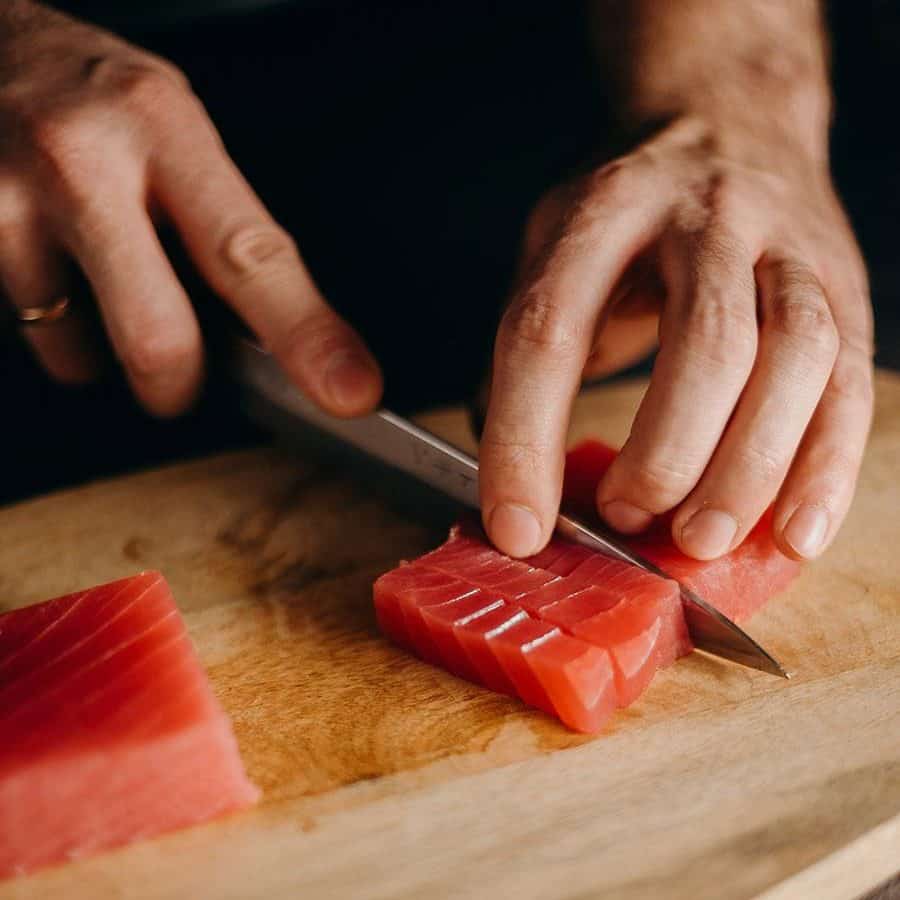
Hardness
Another major difference between German knives and Japanese knives is hardness.
Japanese knives are usually harder than their German counterparts because how hard a knife is determines its sharpness as well as durability. The harder the blade, the sharper it’s able to be honed and sharpened. However, there are limits to how hard a steel can be before it becomes useless. If a steel is too hard it becomes brittle and easier to chip. This is not to say that Japanese knives will chip easily, but they will be more prone to chipping than their German counterparts. Again, it comes down to use, with the more precise cutting and slicing required by Japanese cookery suiting a harder and sharper blade than the slightly more rugged and durable knife required for Western cooking.
Blade Angle
The blade angle of a knife determines the sharpness of the edges.
German knives have a wider blade angle than Japanese knives. Once again, this is because a narrower blade angle is sharper and so can pull off more delicate knife work easier.
Which type of knife is better for you
There is no one-size-fits-all answer to this question, as the best type of knife for you will depend on your individual needs and preferences. However, German knives are often seen as being more durable and versatile than Japanese knives, while Japanese knives are often seen as being sharper and better suited for precision work. If you’re new to cooking and you’re mostly cooking up Western dishes then it’d probably be a safer bet to pick a German knife.
Ultimately, the best way to determine which type of knife is right for you is to try out a few different options and see which one feels most comfortable in your hand and meets your needs the best.
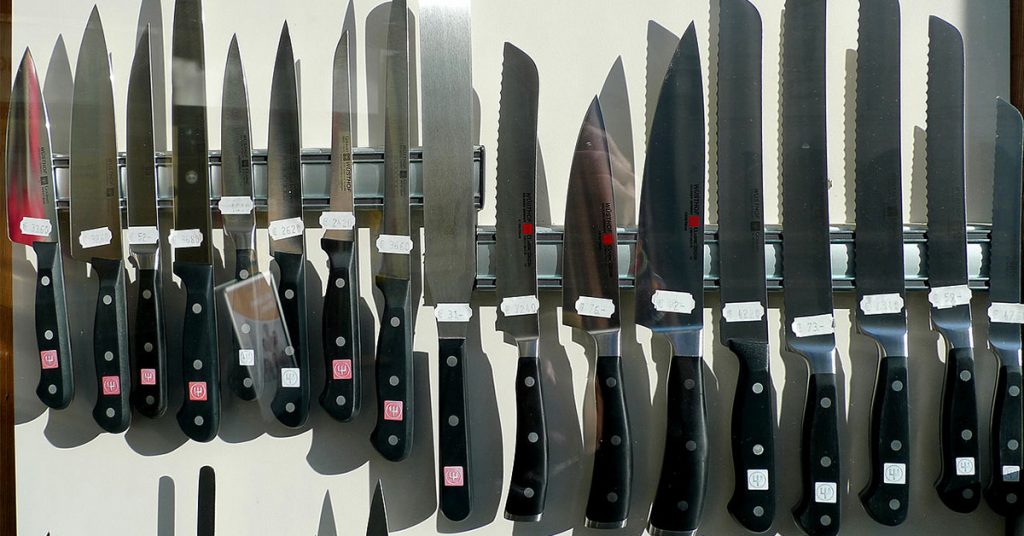
A note for left-handed chefs
An important thing to note here is the symmetry of the blade angle. Most, if not all, German knives are made with symmetrical blade angles meaning it doesn’t really matter which hand you use when you’re using them. Japanese knives, however, are more angled towards right-handed use, meaning left-handed chefs will struggle a little more with them.
Final thoughts on German vs Japanese knives
Choosing the best knife for you is a personal choice. German knives are often seen as being more durable and versatile than Japanese knives, while Japanese knives are often seen as sharper and better suited to precision work. If you’re new to cooking or mostly cook Western dishes then it’d probably be smarter to pick up a German kitchen knife over a Japanese one. As with anything in life, though, there’s no single correct answer that applies universally so take some time before making your decision on which type of blade will suit you best!
